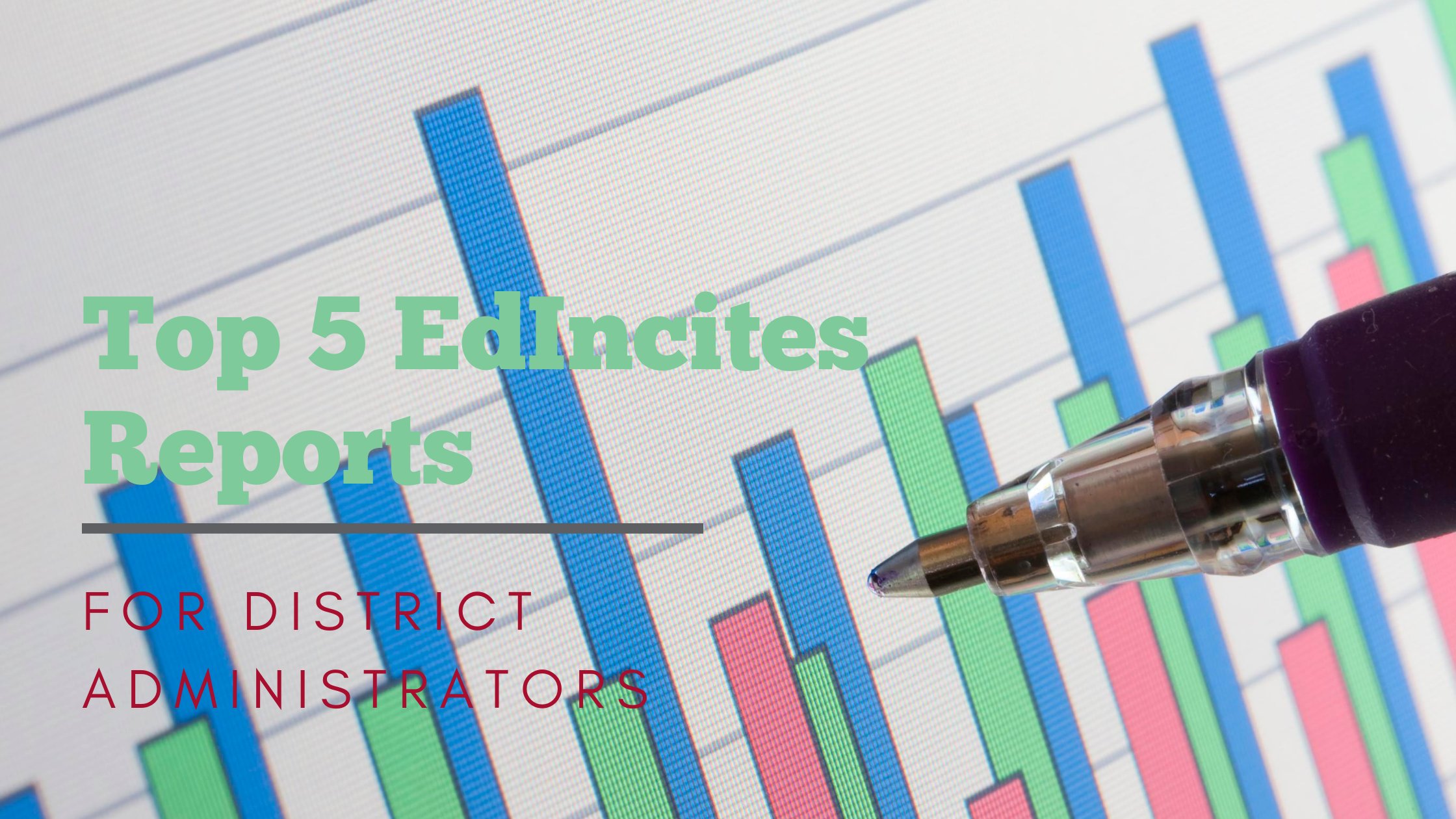
Today’s post is the final installment in our reports series, and we think we’ve saved the best for last. The previous posts in this series were focused on the best EdIncites reports for teachers and building-level administrators. You can check those out here (teachers) and here (building administrators/principals). Today we are highlighting the best reports for district level administrators. We will focus on two types of administrators today: superintendents (or assistant superintendents) and directors of assessment, personalized learning, etc.
Superintendents
Even prior to the COVID-19 era, Superintendents had a lot going on. Now add the new challenges of navigating what ‘back-to-school’ looks like in the midst of a pandemic. That’s why we have a handful of reports designed to quickly provide a high-level overview of what’s going on in the district when it comes to assessment. The two reports we believe are most useful for superintendents are:
#1: Assessment Summary
The Assessment Summary reports provides a high-level overview of performance on multiple aspects of a particular assessment. It contains standard level performance as well as detailed performance metrics. At the district level, it shows school performance data, allowing district administrators to identify which schools are meeting mastery criteria and which are not. The standard performance section of the report contains both the overall score on the standard as well as performance distribution across the assessment cut scores for each standard. The detailed section contains the overall score as well as a percent tested number per detail row.
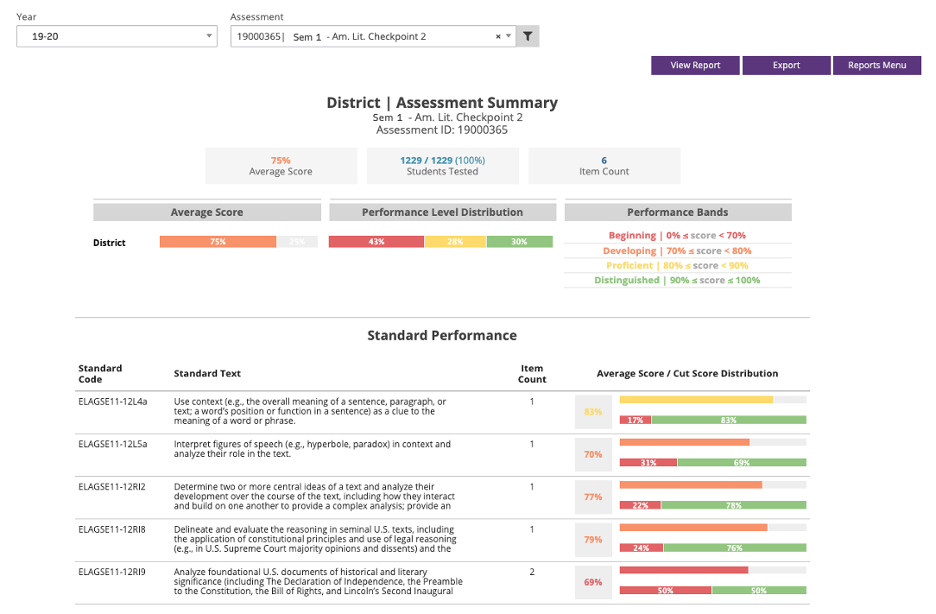
#2: Usage Metrics
The Usage Metrics reports allows Superintendents and other district administrators to see which schools, educators and users are using the Incite platform and how. They can see metrics such as total number of logins, reports run, assessments administered and items created across the entire district, including for specific schools and individuals within a school. This information is useful in ensuring that the investment in technology is worthwhile.

Assessment Directors
Directors of Assessment (Personalized Learning or equivalent) have the tall order of measuring student learning and teacher effectiveness across the district. Unlike superintendents, they are focused on more granular details such as item fairness, rigor and student performance on specific standards. Our two most useful reports for Assessment Directors include:
#1: Assessment Comparison
The Assessment Comparison report is a great report for Assessment Directors because it allows users to select more than one assessment and compares scores across schools, teachers or students depending on the analysis need. Because of this, Assessment Directors can easily identify which schools, teachers or students need remediation. It also includes trending standard performance for the selected assessments.
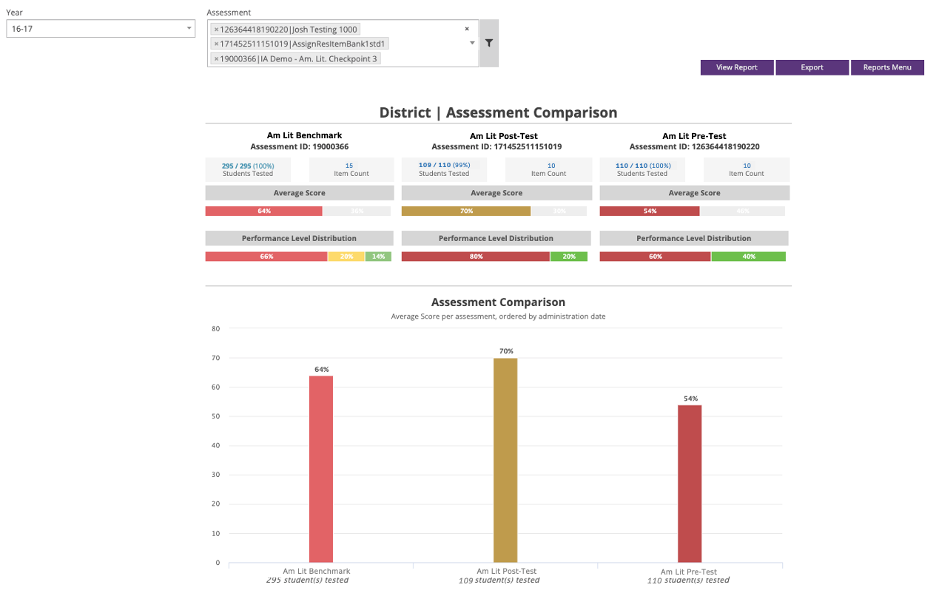
#2: Standard Analysis
The Standard Analysis report provides detailed scores per standard on a given assessment, making it easy for Assessment Directors to identify whether or not standards have been mastered. Users with district level access and permissions can drill down into school and teacher levels to see how certain schools or teachers are performing on various standards.
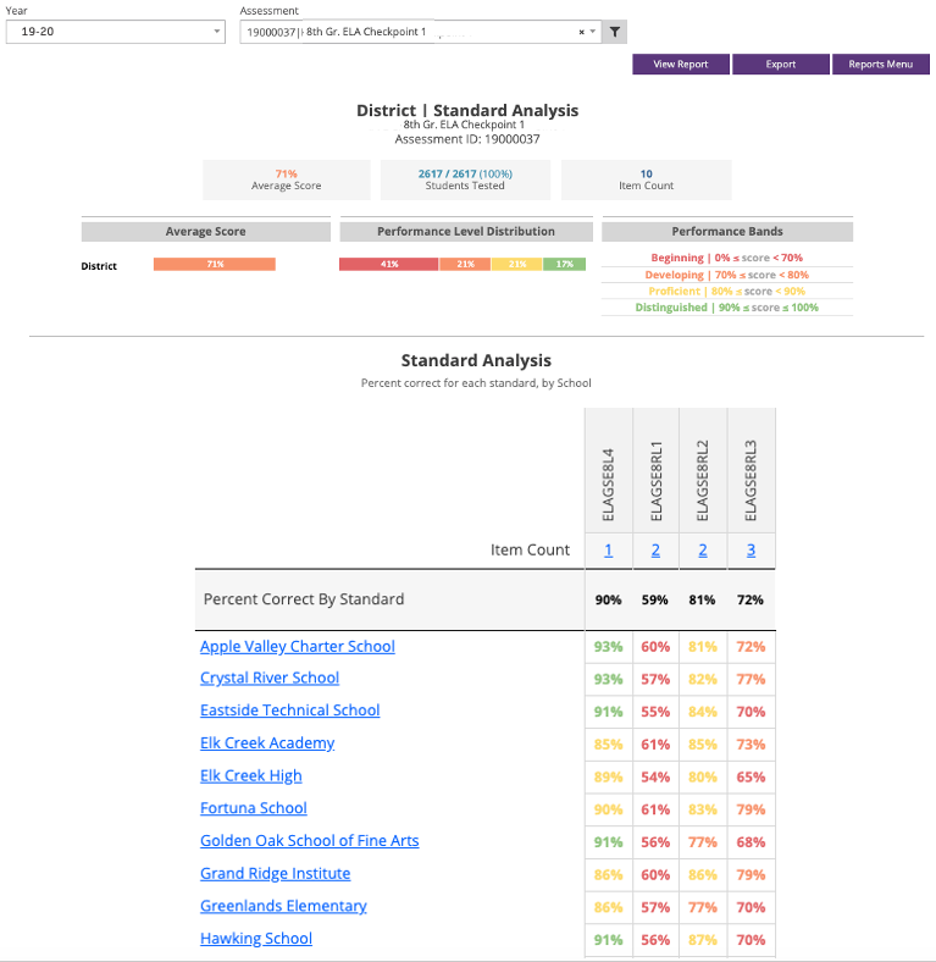
#3: Item Analysis
The Item Analysis report is similar to the Standards Analysis report, except that it provides detailed information for each item on an assessment such as distractor distribution, rubric point distribution, an item preview, standard text and all metadata for the item. This report also includes a performance break-down by interaction type, DOK and RBT. With the Item Analysis report, Assessment Directors can gain insights on item validity for use in future assessments.
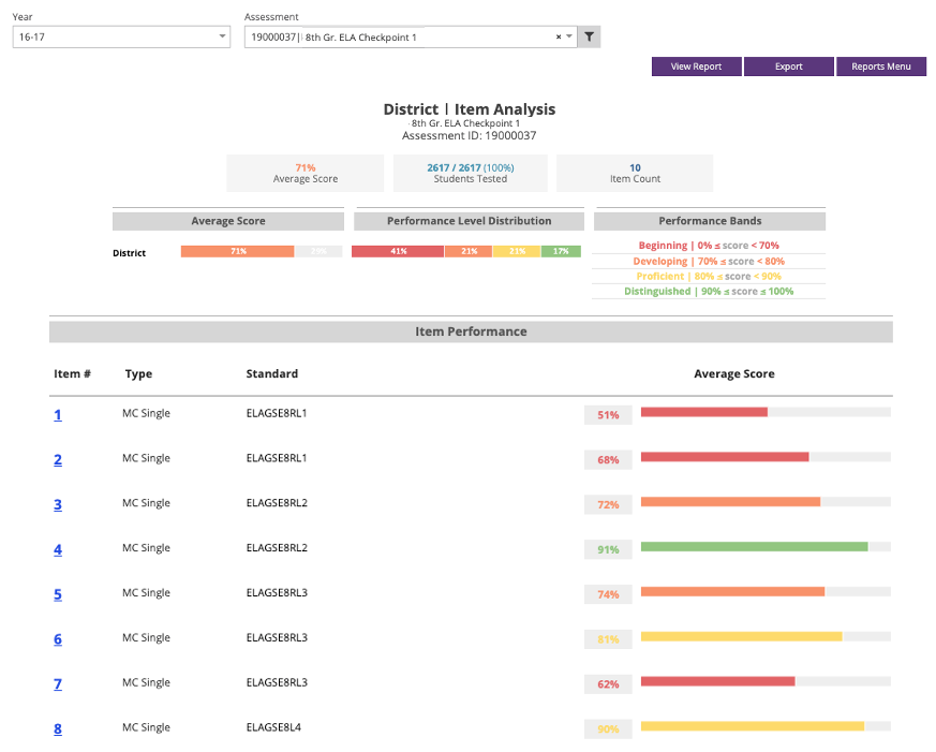
There you have it—these are our top five reports for district administrators, broken out by role. If you’re a district administrator, be sure to let us know which report or data point is most useful for you.



